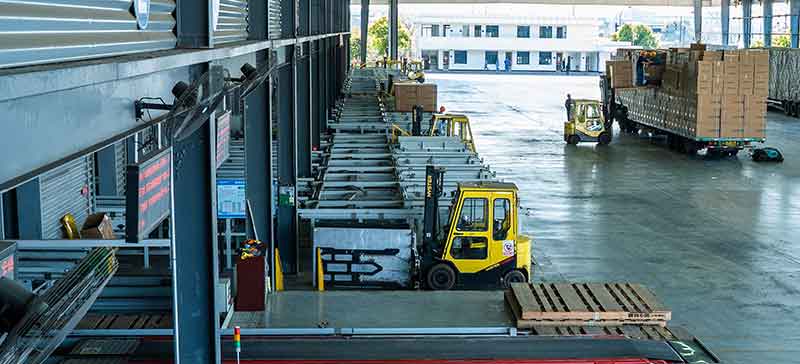In the ever-expanding world of international trade, businesses face numerous challenges when it comes to shipping and logistics. Understanding different shipping methods and terms is vital for effectively managing cross-border operations.
One such method that holds significant importance is LDP shipping, which stands for Landed Duty Paid. This post serves as an introduction to LDP shipping terms, providing a clear definition and highlighting its relevance for businesses engaged in international trade.
What is LDP shipping meaning?
LDP, or Landed Duty Paid, refers to a shipping arrangement where the seller assumes responsibility for all costs and risks associated with delivering goods to the buyer’s location. This includes the payment of import duties, taxes, and any other fees imposed during customs clearance. In essence, the seller ensures that the goods are delivered to the buyer’s designated destination, cleared through customs, and ready for unloading.

Key Characteristics of LDP Shipping
Customs clearance
One of the primary features of LDP shipping is that the seller is responsible for customs clearance and duty payment between the seller and buyer destinations.
Total landed costs
The LDP shipping term encompasses all costs associated with delivering the goods to the buyer’s location. It goes beyond the actual transportation costs and includes expenses related to customs clearance, duties, and taxes.
Risk allocation
Under LDP terms, the risk of loss or damage to the goods during transit rests with the seller until they are delivered to the buyer. It means that the seller bears the responsibility for any potential risks, such as cargo theft, damage, or shipping delays during transportation.
Responsibilities in LDP Shipping Process
Seller's responsibilities in LDP shipping
Typically, the seller will arrange the whole logistics procedure of the goods from the origin to the destination. It means they will handle all the customs clearance processes, ensuring compliance with applicable customs regulations and requirements.
In addition, the seller’s responsibilities extend beyond export procedures. They also hold obligations for import procedures at the destination port of the buyer. These encompass various aspects, including paying customs inspection fees, and customs duties by the buyer destination.
Buyer's responsibilities in LDP shipping
The buyer is responsible for fulfilling the payment obligations as agreed upon in the initial negotiation. It typically involves making the payment for the goods, including the cost of transportation, duties, and any other agreed-upon charges.
Furthermore, the buyer should provide accurate and complete information to the supplier to facilitate the customs clearance process. It may include details such as the consignee’s information, buyer licenses, or any specific requirements of the destination country.
Benefits of LDP Shipment
LDP shipping offers buyers several advantages. Here are some key benefits:
Cost transparency
Buyers benefit from pricing transparency and predictability. The seller assumes responsibility for customs duties, taxes, and fees, which are included in the overall cost of the goods. It allows buyers to calculate their landed costs upfront, enabling better financial planning and budgeting.
Reduced financial risks
With the seller handling customs clearance and duty payment, buyers can be relieved of complex customs procedures. It reduces the likelihood of errors, delays, or penalties that could result in financial losses. Buyers can focus on their core business operations, knowing their goods will arrive smoothly without unexpected financial obligations.
Increased supply chain control
LDP shipping provides buyers with increased control and visibility in the supply chain. Sellers manage the transportation, allowing buyers to track and monitor their shipments’ progress. It enables proactive management of delays or issues, optimizing inventory management and distribution.
Streamlined customs clearance
Sellers experienced in LDP shipping are well-versed in customs regulations and requirements. They navigate customs procedures efficiently, resulting in smoother and faster customs clearance. It minimizes potential delays at borders or ports of entry, reducing administrative burdens and ensuring compliance with customs regulations.
For more detailed information about LDP shipping, you can rely on Airsupply. With their extensive experience, they have successfully handled 200,000 CBM cargo per month under various shipping incoterms.
Potential Drawbacks and Challenges of LDP Shipping
There are several drawbacks associated with using LDP shipping terms. These disadvantages mainly revolve around three key risks that sellers face in this arrangement:
Transport risk
As the seller is responsible for the entire transportation process, they bear the risks associated with the shipment. Any unforeseen incidents or damages during transit can result in financial losses for the seller. To mitigate this, sellers can obtain suitable cargo insurance to protect their interests.
Customs clearance risk
The seller also assumes the risk of customs clearance for the imported goods. If there are complications or difficulties in clearing the goods through customs at the destination country, the seller may face additional costs and delays.
Buyer payment risk
While sales contracts typically specify payment terms, it is common for buyers to prefer paying upon delivery. If the seller has already shipped the goods but the buyer fails to make the payment, the seller may face financial losses.
It is essential for sellers to carefully evaluate these risks and take appropriate measures to mitigate them, such as obtaining insurance coverage, conducting thorough due diligence on customs requirements, and establishing secure payment arrangements with buyers.
How to calculate LDP?
Calculating LDP shipping terms involves considering various factors and may not have a specific formula. Since it depends on the shipment details and the applicable customs duties and taxes. However, you can use the following general formula as a starting point:
LDP = Cost of Goods + Transportation Costs + Customs Duties + Taxes + Other Expenses
Here’s a breakdown of the components:
Cost of goods: It is the agreed-upon price between the buyer and seller for shipping cargo.
Transportation costs: Include freight charges, handling fees, insurance costs, and other relevant expenses associated with transporting the goods from the seller’s location to the buyer’s destination.
Customs duties: Research and determine the customs duties imposed by the importing country. These duties are typically a percentage of the declared value of the goods. It may vary from the type of goods, country of origin, applicable trade agreements or preferences, etc.
Taxes: Consider any applicable taxes, such as value-added tax (VAT) or sales tax, imposed by the importing country. These taxes often depend on the declared value of the goods.
Other expenses: Account for any additional expenses related to customs clearance, documentation, storage, handling fees, or other charges specific to the shipment and the importing country’s requirements.
To obtain accurate landed cost information, you can consult with customs agents or expert freight forwarders. At Airsupply, they will provide instant and precise total quotes based on the specific details of your shipment and the countries involved.
The difference between LDP and DDP
LDP and DDP (Delivered Duty Paid) are both international shipping terms that define the responsibility and costs associated with the delivery of goods from the seller to the buyer. While they are similar in some aspects, there are key differences between LDP and DDP: the extent of responsibility and cost coverage.
With LDP, the buyer may still have to bear additional costs beyond the point of delivery, while with DDP, the seller covers all expenses until the goods are delivered and ready for use by the buyer. It is significant for both parties to clearly define their responsibilities and agree on the appropriate Incoterm (such as LDP or DDP) to avoid any confusion or misunderstandings during the transaction.
Conclusion
Understanding LDP shipping and partnering with a reliable shipping provider is crucial for businesses engaged in international trade. Airsupply, a trusted freight forwarder, specializes in handling various shipping terms, including LDP. They can assist in shipping apparel from China to the USA under beneficial LDP terms.
With Airsupply’s end-to-end logistics solutions, you can enjoy a hassle-free experience in receiving cargo at your desired destination. Whether customs clearance, transportation, or documentation, Airsupply’s expertise ensures a smooth and efficient shipping process. Reach out to Airsupply and request a live quote to get started now. Their dedicated team will be more than happy to assist you.




